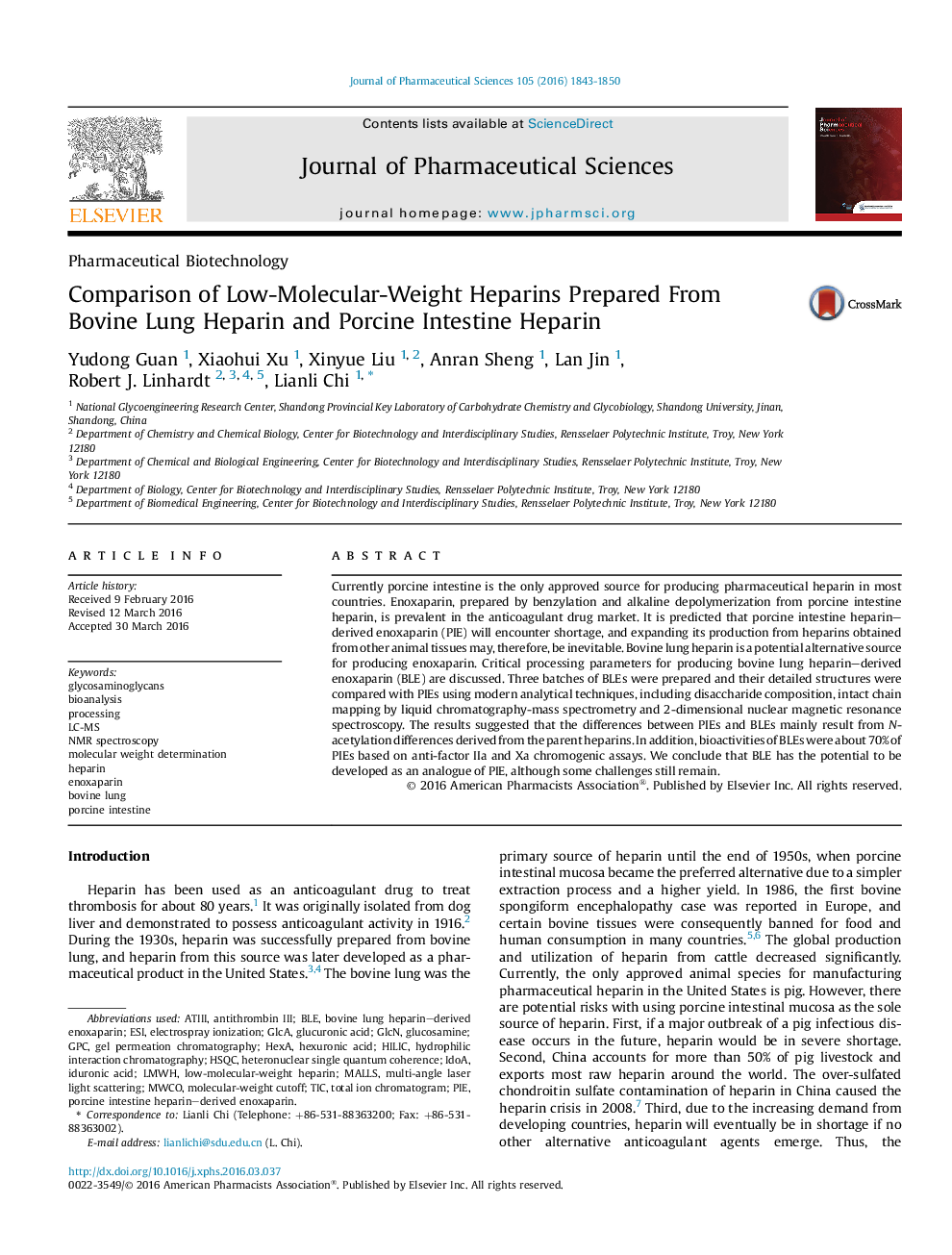| Article ID | Journal | Published Year | Pages | File Type |
|---|---|---|---|---|
| 10161900 | Journal of Pharmaceutical Sciences | 2016 | 8 Pages |
Abstract
Currently porcine intestine is the only approved source for producing pharmaceutical heparin in most countries. Enoxaparin, prepared by benzylation and alkaline depolymerization from porcine intestine heparin, is prevalent in the anticoagulant drug market. It is predicted that porcine intestine heparin-derived enoxaparin (PIE) will encounter shortage, and expanding its production from heparins obtained from other animal tissues may, therefore, be inevitable. Bovine lung heparin is a potential alternative source for producing enoxaparin. Critical processing parameters for producing bovine lung heparin-derived enoxaparin (BLE) are discussed. Three batches of BLEs were prepared and their detailed structures were compared with PIEs using modern analytical techniques, including disaccharide composition, intact chain mapping by liquid chromatography-mass spectrometry and 2-dimensional nuclear magnetic resonance spectroscopy. The results suggested that the differences between PIEs and BLEs mainly result from N-acetylation differences derived from the parent heparins. In addition, bioactivities of BLEs were about 70% of PIEs based on anti-factor IIa and Xa chromogenic assays. We conclude that BLE has the potential to be developed as an analogue of PIE, although some challenges still remain.
Keywords
LMWHhexuronic acidHexAIdoAMALLSGlcAGlcNESIATIIITICHSQCGPCMWCOLC-MSantithrombin IIIiduronic acidGlucuronic acidEnoxaparinBleBioanalysisMolecular weight determinationProcessingNMR spectroscopyHeparinlow-molecular-weight heparinHILICPiemulti-angle laser light scatteringhydrophilic interaction chromatographyGel permeation chromatographytotal ion chromatogramglucosamineGlycosaminoglycanselectrospray ionizationheteronuclear single quantum coherence
Related Topics
Health Sciences
Pharmacology, Toxicology and Pharmaceutical Science
Drug Discovery
Authors
Yudong Guan, Xiaohui Xu, Xinyue Liu, Anran Sheng, Lan Jin, Robert J. Linhardt, Lianli Chi,
